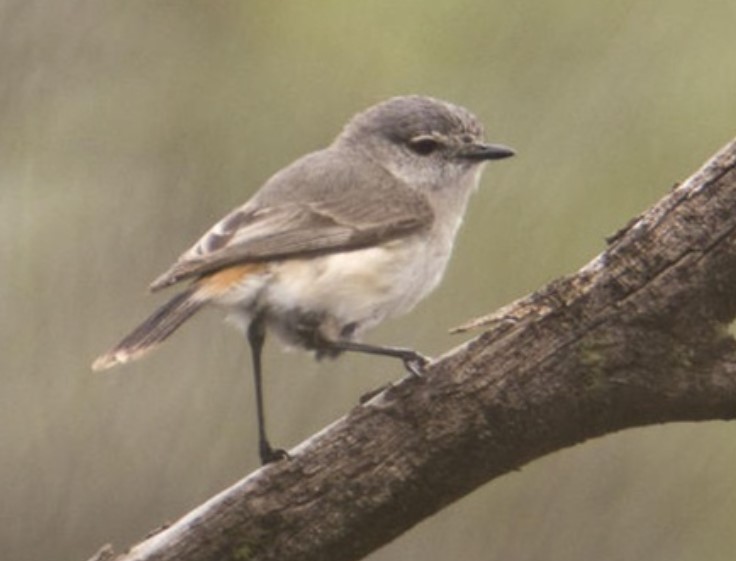Family: The slaty-backed thornbill (Acanthiza robustirostris) belongs to the family Acanthizidae in the order Passeriformes.
Identification: Both adult sexes are similar. The upper parts are rich grey with a slight blue tone; fine black streaks on the crown; and rump dull russet. Wings are darker grey-brown. The tail is dusky, with white inner tips on all but the central pair of feathers. Underparts are plain white. Eye red. Bill and feet are black. The immature (as an adult) eyes are browner.
Habitat: Slaty-backed Thornhill is found in the Mulga woodlands of central-western Australia, where it forages in the same feeding zone as the grey, inland race of the Brown Thornhill. The outer branchlets and foliage of shrubs and trees are about one to five meters above the ground.
Behavior: It appears to be sedentary, feeding alone, in couples, or in small family groups rather than gathering together in larger foraging flocks like other thornbills do. Often, they forage in mixed flocks with chestnut-tailed and Brown Thornbills; the usually clean white breast of the slaty-backed is one of its most reliable identifying features. Many aspects of this thornbill’s biology are still confusing. Although it primarily forages in mid-height foliage, it does come to the ground, maybe to dust-bathe, and may travel locally depending on seasonal conditions.
Diet: The birds are very active but rather quiet in their feeding, hop-gleaning along twigs and among leaves, picking off insects, larvae, and spiders, and often hanging upside down beneath foliage or fluttering to do so.
Vocalizations: Slaty-backed Thornhill call is high, plaintive whistled seee, seee in contact. Harsh two-note churr in alarm. The song is usually high-pitched up-and-down, warbled, and whistled, resembling Brown Thornbill’s.
Nesting and Breeding: Slaty-backed Thornhill nesting and breeding occur in July–November; at other times, depending on rainfall,. Nest domed, often with a poorly constructed top and side entrance with a slight hood; of dried grasses lightly bound with cobwebs and cocoons; lined with hair, feathers, and soft plant materials; generally placed in twigs and foliage of low bush.
Eggs: The bird lays two or three eggs; white with a pink tinge, speckled finely with rust-red markings, often forming a zone at the larger end; oblong-oval, about 1 6 x 12 mm.
Alternative Names: It is also known as Robust Thornbill, Thick-billed Thornbill, and Robust-billed Thornbill.
Size: Slaty-backed Thornhill measures 100–110 mm in length.
Distribution: It is found in Mulga Acacia woodlands and scrubs of inland west and central mainland east around the northern Simpson Desert to far-western Queensland.
Races: There are no races.
Read More: Yellow-throated Honeyeater (Nesoptilotis flavicollis)


